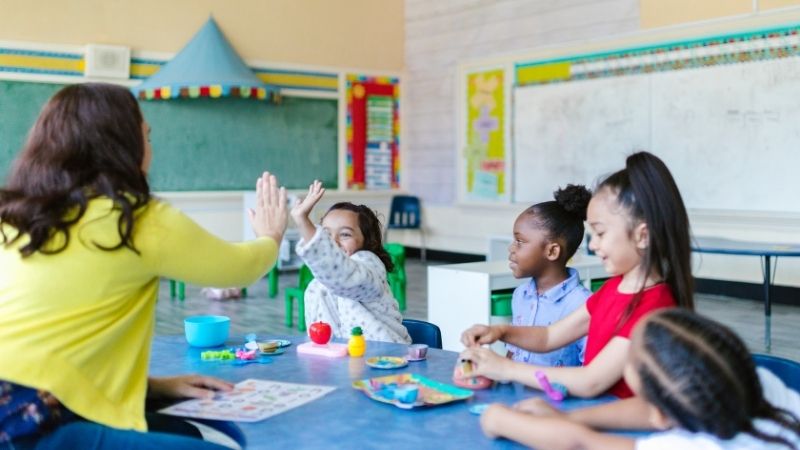
For many students, special education collaboration is a crucial component of their educational experience. It allows teachers to communicate and collaborate with one another and ensures that each student is receiving the individualized attention they need.
Collaboration is important for educators of all kinds. This blog post will explore the power of collaboration in special education, and how it can help all teachers make a difference in the lives of their students!
Team Teaching
Co-teaching is a standard approach in inclusive classrooms, and it can help students with disabilities achieve academic success. But it requires a lot of time and support from administrators and special educators to succeed. Teachers who are not given enough collaborative planning time to work with their team teaching partners may feel overwhelmed and resentful of the arrangement.
When co-teaching is done well, it can reduce teacher stress and provide enriching learning experiences for all students. In addition to sharing instructional responsibilities, it also allows for flexible grouping based on student needs. It can take on a variety of forms, such as parallel teaching (both teachers teach the same lesson at the same time), station teaching, and alternative teaching. The most successful models include parity among teachers and a balance of gender, culture, and age to encourage healthy discussion and conflict resolution.
Support Staff
In a traditional classroom setting, support staff play an integral role in fostering an enriching learning experience. Typically, support staff provide help with classroom activities, work with small groups to reinforce material, and operate and care for equipment used for instruction.
However, in blended classrooms, support teachers must collaborate with general education teachers and SETSS specialists on many new tasks, including modifying online materials and providing accommodations for students. They must also work together to address student issues and communicate with parents.
They must be skilled in collaborating with other educators in a collaborative way, and they must also have the support from their administration to manage these extra assignments without compromising on the quality of their teaching. Unfortunately, as school budgets tighten, the tendency is to cut support staff more severely than other resources.
Paraprofessionals
Often, paraprofessionals work with students one-on-one to help them understand lessons and practice their assignments. They also offer additional instruction before or after class and oversee student testing under the guidance of a teacher.
These aides are crucial in helping teachers keep up with classroom instruction while serving students with special needs, who require more attention. Without them, these children could fall behind their peers in a regular classroom and struggle to learn in isolation.
School family liaisons (SFLs) are another important aspect of any team. SFLs leverage contextual knowledge — like culture, language, and neighborhood — to engage parents, which facilitates their role as advocates within the school system. In addition, they prioritize relationship building for families in high-need communities. This helps to build trust and ensure that the program is delivering the intended results.
Specialists
When teachers are able to collaborate with each other and share best practices, students are sure to receive an enriching learning experience. However, fostering this collaborative culture can be challenging.
One way that educators can improve their collaboration is by using the team teaching model. In this classroom setting, special education teachers work together with general educators to support the needs of students.
This allows teachers to offer supplemental or complementary instruction, such as modeling note-taking strategies, paraphrasing content or recording the primary lesson. The team must also discuss how to observe student participation and agree on a protocol for collecting data. Depending on the federal settings, this model may not be considered a "stacked" instruction model and therefore, midpoints may not capture special education services hours.
Administration
Administration in special education is important to foster an enriching learning experience. It oversees the implementation of individualized educational plans (IEPs) for children with disabilities, and ensures that the school district is following all appropriate procedures.
This includes verifying that services billed by outside providers were actually delivered, and that the programs and lessons are within budget. Administrators also serve as mediators during meetings between teachers and parents.
Many administrators have classroom teaching experience and have advanced their careers into administrative positions. In these roles, they may forfeit eligibility for tenure and membership in their union. They must be able to motivate and guide their teams of special education teachers and support staff to create effective programs. In addition, they must be able to communicate effectively with all parties.
 Careers in EducationElementary EducationHigh School EducationEducational TechnologyTeaching StrategiesSpecial EducationPrivacy PolicyTerms And Conditions
Careers in EducationElementary EducationHigh School EducationEducational TechnologyTeaching StrategiesSpecial EducationPrivacy PolicyTerms And Conditions
